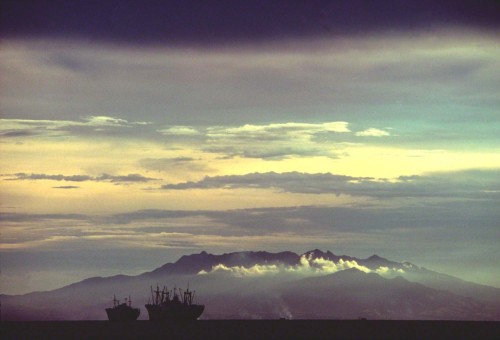Photography is most definitely the love of my life, but right under it is fishing and then cooking. I love to look through cookbooks, especially ones with great food photography, and find interesting things to serve when entertaining…which we love to do. Having said this, I’m really into recipes, and I’m always using some kind of recipe when talking with my online students with the BPSOP, and my fellow photographers that take my “Stretching Your Frame of Mind” workshops I conduct around the planet.
I often like to create an atmosphere where the viewer is drawn into my photo whether he wants to or not. I want to induce a feeling in his psyche. What’s behind this notion is all about the Psychology of Gestalt, where we want the viewer to be an active participant in our photos. We want to take control of how he processes and perceives our imagery.
Creating a mood is a good way to not only deliver your message visually but editorially as well. What do I mean by editorially? By using a certain mood to tell a story, which incidentally doesn’t have to be controlled by light.
According to the dictionary, the definition of mood is: “A temporary state of mind or feeling”. It also means “The atmosphere or pervading tone of something, especially a work of art”. This is where photography comes it since we’re all artists, our medium is a camera instead of a paintbrush.
So how do we achieve this atmosphere, this state of mind? Well, first you have to determine what kind of mood you’re after. Do you want your photo to ooze with a bright and happy or a dark, melancholy, and introspective mood? Do you want the viewer’s eyes to well up with sadness or the proverbial grin from ear to ear?
If this is the way you’re after, then it’s all about how you manipulate the light and color. Darker colors for somber pensive moods or rich, bold, and vibrant colors for a more cheery look. Although color is a big factor, the use of light transcends everything.
As I said, the use of light doesn’t always factor in. If you look at the above photo, light isn’t that important; it’s all about the story I was telling.
It’s hard to create a somber mood on a bright sunny day. It’s all about the emotional environment. Since I shoot early in the morning and late in the afternoon, the light is going to be softer and the shadows longer. An overcast, gloomy day is a good way to create a type of mood, as well as the placement of your subject. For example, placing the subject small and in the bottom right-hand corner will give the feeling of loneliness as in the below slideshow of the cross country skier.
Visit my website at www.joebaraban.com and check out my workshop schedule at the top of this blog. Come shoot with me some time and I’ll get you in the mood.
https://www.instagram.com/barabanjoe/
JoeB






I really liked this article Joe. I agree that is what art is really about, provoking an emotion or thought to the viewer. My goodness you must have been up high on a ladder or crane to get that car shot! P.S. I am checking with work to ensure I can schedule vacation for the workshop date! I can not pick till next week but am pretty sure the week will be available to me!
Gary,
I was on a Cherry Picker and i had the car drive out from under me towards the sunset.
Btw, the reason i was able to get so much dust to glow was that I not only backlighted it but I had my crew lay down what’s called “Fuller’s Earth”. It’s a very fine dust that’s put over existing dirt so that it will look like it did in the photo. Otherwise, there wasn’t enough on the road to make it look good.
I hope we can toast to our good health with a glass of Opus One next September.
JoeB
…What a cheater! LOL I’m just kidding! That’s something really interesting! I always thought they were using dry ice to add a layer of “steamy looking” to a scene. I never heard about “Fuller’s Earth”.
LOL I’m just kidding! That’s something really interesting! I always thought they were using dry ice to add a layer of “steamy looking” to a scene. I never heard about “Fuller’s Earth”.
Do you have it also in your “bag of solutions” usually?
Joe how about color cast due to WB settings (in the old film days it was something used creatively when not corrected with filters)?